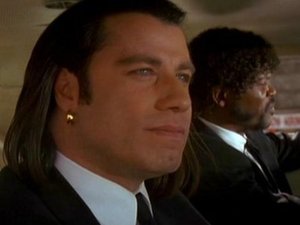BLOG 2 – ENG225 Introduction to Film
LIGHTING
Lighting term: Mise en scène. “Technically, lighting is a part of the mise en scène, whether or not a camera is on the set (such as with live theater). However, it is the focusing of light onto a photosensitive emulsion on film, or electronic sensor in a video camera, that makes possible the recording of a photographic image.” (Goodykoontz, B., & Jacobs, C. P., 4.4 Lighting. 2011).“A high-key lighting is designed to have a very bright light over everything, with few shadows and relatively low contrast between the lightest and darkest part of the scene.” (Goodykoontz, B., & Jacobs, C. P., 4.4 Lighting. 2011). This style is used in comedies and happy scenes.
A low key lighting is designed for the scene to look dark with heavy shadows. This style is used in drama, horror, and mystery type scenes.
A three-point lighting design supports the control of shadows. “Two are in front of the subject, but on opposite sides of the camera aimed at roughly 45--degrees angles (about 90 degrees from each other).” (Goodykoontz, B., & Jacobs, C. P., 4.4 Lighting. 2011).
PULP FICTION
Definition of Pulp Fiction – noun, fiction
dealing with lurid or sensational subjects, often printed on rough, low-quality
paper manufactured from wood pulp. Origin: 1950-55, Americanism. Reference from
Dictionary.com Unabridged.
Photos from scenes of the movie - Pulp Fiction (1994).
Lighting – References from the movie by Quentin Tarantino – “Pulp Fiction” (1994).
"Lighting in Pulp Fiction: The Director of Photography is in charge of managing all the filming and lighting crews in the art of cinematography. They are in charge of the effective artistic visual presentation of the film. In Pulp Fiction (1994), the Director of Photography was Andrzej Sekula.” (Delich, M. Prezi.com. May 2013).
“Lighting. This image of Mia Marcellus is meant to suggest her beauty and sexuality, as Vincent is made to have to keep her entertained for a night. There is a soft lighting meant to cover any facial flaws she may have, and the low-key lighting adds to her mysterious seductiveness.” (Delich, M. Prezi.com. May 2013).
Lighting in this scene is a high-key to provide details to Vincent (John Travolta) and Jules (Samuel Jackson). This scene introduces the two main characters as two well dressed men as Vincent describes to Jules of his recent visit to Amsterdam. This is the best lighting effect for this scene. In contrast, if the scene was shot in a low-key design, the characters and their relations with each other could be viewed uneventful and not important.
Dance scene of Mia Wallace and Vincent Vega as they compete in a dance contest at the restaurant. The lighting in this scene represents a three-point lighting design that allows control of shadows with accent to the main characters. Vincent claims that the restaurant, "Jack Rabbit Slims" is like a wax museum with a pulse. The duo win the contest.
References:
Goodykoontz, B., & Jacobs, C. P.
(2011). Film: From Watching to Seeing. San Diego, CA: Bridgepoint Education, Inc. Retrieved from
Ashford University and Constellation™ course digital materials
(CDM) title.
(2) Photo - Pulp Fiction - Dime novel cover. - http://ca.eonefilms.com/eOne/medialibrary/eOneFilmsCanada/eOneFilmsCanada/Movies/Pulp%20Fiction/pulpfiction_poster.jpg?width=300&height=445&ext=.jpg
(3) Photo - Pulp Fiction - Introduction scene, Vincent and Jules. http://i1.cdnds.net/12/34/300x225/movies_pulp_fiction_1.jpg
(4) Photo - Pulp Fiction. Mia and Vincent during dance contest. http://www.dvdtalk.com/reviews/images/reviews/262/full/1356977613_10.png
(5) Photo - Pulp Fiction - "The Bonnie Situation". http://image.tmdb.org/t/p/w1280/wGYKjZdDDBxBxuVMzHqcjA411Mv.jpg
(6) Photo - Pulp Fiction. Final Scene prior to the conflict with Hunny Bunny and Ringo.
http://clclt.com/binary/f05e/1327529576-pulp-fiction.jpg
pulp fiction. (n.d.). Dictionary.com Unabridged. Retrieved August 27, 2014, from Dictionary.com website: http://dictionary.reference.com/browse/pulp fiction






No comments:
Post a Comment